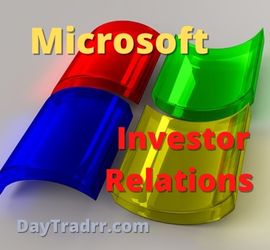Stash Stock Party – Get in on the Action!
 Are you thinking about using a personal finance and investment app to help you keep track of your money and make it grow? Stash is a popular option to consider. However, before making a choice, it’s important to know how much the platform costs. Also, what fees it has, as well as any risks and downsides. Investing can be fun and exciting at a Stash Stock party. But before diving in head first, it’s important to do your homework and weigh the advantages against the disadvantages.
Are you thinking about using a personal finance and investment app to help you keep track of your money and make it grow? Stash is a popular option to consider. However, before making a choice, it’s important to know how much the platform costs. Also, what fees it has, as well as any risks and downsides. Investing can be fun and exciting at a Stash Stock party. But before diving in head first, it’s important to do your homework and weigh the advantages against the disadvantages.
Stash is a personal finance and investing app. It lets people invest in stocks, exchange-traded funds (ETFs), and other types of investments. Using the app requires nothing more than a smartphone or other mobile device. The app makes it easy for people who have never invested before to start. Moreover, the platform has a variety of educational tools and learning resources. These references help users learn about the financial markets and make smart investment choices. Users can start a portfolio with a small amount of money and add to it over time. Depending on their goals and risk tolerance, new investors can choose from a variety of investment options.
What is a Stash Stock Party?
The Stash Stock Party is an exciting benefit that Stash offers to its members. It lets participants earn fractional shares of stock from publicly traded companies and exchange-traded funds. Stashers, or people who use the Stash platform, can get pieces of offered stock by logging in to a Stash Stock Party. How much stock each person gets depends on how many people show up to the party. The more people who come, the more money there is to split and the more stock each person gets.
How to Join a Stash Stock Party
Users can join a Stash Stock Party by going to the Stash website on the day of the party. Simply log in and then tap the “Claim stock” button. If you are not already a Stasher, you can still reserve your stock by giving your email address. Then, follow the instructions to finish your Stash account and claim your stock. You can only get a Stock Reward if you have a personal investment account with Stash. Also, the account must be in good standing with a valid email address.
In addition to the main prize pot, there are other levels at Stash Stock Parties. These levels depend on how many people show up. When more people come to a party, the level of the party goes up, which can make the prize pot for everyone even bigger. A few days before a Stock Party, Stash contacts members through its app. In this way, potential participants are notified of upcoming events and can make plans to attend.
Stash Stock Party Rewards
Sock rewards at Stash Stock Parties are usually small. Sometimes, fractional shares are only worth a few cents. However, it can still be a fun and potentially profitable way to start investing. Also, the prize pot gets bigger the more people come to a party. So, it’s always a good idea to invite friends and family to join in the fun.
Every Stash Stock Party features party levels, which are defined by a certain threshold of party attendees. The more people that attend a Stock Party, the higher the party level reached. As a result, the larger the Stock Party split prize pot gets for everyone. The more people that attend a Stash Party, the larger the potential prize gets. Every few days, the app will notify members of an upcoming Stash Stock Party.
Stash Fees
Let’s begin by taking a look at the costs associated with using Stash. The fee structure ranges from $1, $3, or $9 on a monthly basis as a subscription fee. It depends on the level of service that you choose. And, there may be extra fees in addition to the membership cost for some services or features. Extras include the Stash debit card or the fully-automated Smart Portfolio option. When compared to other investing apps, Stash’s one-dollar monthly membership price is on the affordable end of the scale. Other services charge anywhere from one dollar to ten dollars or more each month.
However, there are companies and apps that do not charge any kind of monthly fee at all. Instead, they may generate revenue via other channels. For example, as trade commissions or account minimums. Before making a choice, give serious consideration to the total cost of utilizing a certain platform. This should not overlook any extra costs that may be incurred.
Stash – Potential Risks
Stash may feature lower prices than some of its rivals. However, users should be aware that there are still possible dangers and downsides associated with using the service. There is always the potential for monetary loss associated with every investment you make. In addition, compared to other platforms, the number of investment possibilities that Stash provides is very restricted. Some investors will not find this acceptable. Particularly as they gain experience and want larger market exposure. Also, Stash does not provide personalized financial counsel or advice. This may not be the greatest option for those who are just starting out in the world of investing. While there are educational tools available, human interaction is not available.
Do your homework before making a choice to use Stash – or any other app for personal finance and investing. You should give thorough consideration to both the advantages and the possible downsides of doing so. Of course, the platform’s cheap fees may be appealing. However, it is essential to weigh the total cost, the investment possibilities that are accessible, and the degree of personal assistance and support that is provided.
Stash Stock Competitors
Acorns, Robinhood, and Betterment are some prominent companies that compete with Stash in the market for mobile applications. These firms also help individuals manage their personal finances and investments. Their applications provide users with the ability to invest in a variety of financial instruments via their mobile devices. Moreover, they all provide most of the same services. Nevertheless, there is a bit of diversity in capabilities and focus offered by each app. Therefore, you should evaluate a variety of possibilities before deciding which one suits your specific purposes the most effectively.
Acorns
Acorns is a mobile application for managing personal finances and investing. It enables users to put the spare change they accumulate from their day-to-day purchases into a diverse portfolio of stocks and bonds. The application will round up the total of each transaction to the next dollar and then invest the difference. This allows for the potential accumulation of more funds over time. Also, the platform provides its members with a variety of educational materials and tools to assist them. As a result, investors can learn about investing and make educated choices on their own personal finances. Users are able to start a portfolio with a very modest sum of money. Then, they can add to it over the course of time. The platform offers a variety of investment possibilities. In turn, investors may choose according to their objectives and level of comfort with risk.
Robinhood
Robinhood lets users buy and sell stocks, exchange-traded funds (ETFs), and many other investment vehicles. Trades are available via a user’s smartphone or similar mobile device. The commission-free trading offered by the app is one of its most notable features. This enables users to purchase and sell stocks without having to pay any fees to the broker. In addition to trading, users of Robinhood have access to a variety of tools and educational materials. These are designed to teach novices about investing and assist them in making educated choices about their own finances. Features include market news and analysis, articles with instructional content, and data on the market. News and market data are updated in real-time.
Betterment
Betterment is another prominent mobile application for personal finance and investing. It gives users access to a variety of investment opportunities, such as stocks, exchange-traded funds (ETFs), and other assets. The software was developed to make it simple for users to define and accomplish their many monetary objectives. For example, putting money away for retirement, purchasing a new house, or just increasing their overall wealth. Betterment provides its customers with a variety of customizable investment portfolios to meet their unique risk tolerances and objectives.
In addition, Betterment offers educational materials and tools that can assist users in learning about investing and making educated choices on their own finances. Users may start an account with a very modest sum of money and then add to it over time. They can then choose from a variety of investment alternatives depending on the objectives they want to achieve and the level of risk they are willing to take.
Frequently Asked Questions
Q: What is a Stash Stock Party?
A: The Stash Investment Rewards Program is for Stash Personal Portfolio Holders. The rewards include a function called a Stash Stock Party offered by Stash Investments LLC. By attending a party, participants can earn fractional shares of stock from featured publicly-traded firms and exchange-traded funds. The higher the number of individuals who attend the party, the larger the total prize pool will be. As a result, the larger each person’s share will be. The quantity of stock that each person will get is proportional to the number of people who are present at the event.
Q: How do I join a Stash Stock Party?
A: Simply visit the web website for Stash on the day of the party and log in to your account. Then, choose the “Claim stock” option on the screen to participate in a Stash Stock Party. You may still reserve your stock even if you are not currently a Stasher if you provide your email address. Later, just follow the procedures to finish creating your Stash account and claim your stock. Remember, in order to be eligible to earn a Stock Reward, you need to have a personal investment account with Stash. The account must be in good standing and have a valid email address. If you do not meet these requirements, you will not be eligible to receive a Stock Reward.
Q: Are the stock rewards from a Stash Stock Party significant?
A: The value of the stock prizes that may be won by participation in Stash Stock Parties varies. Sometimes, it ranges from only a few cents to over $.25 or more. However, the size of the prize pool will increase according to the number of guests at a party. Therefore, it is always to your advantage to invite friends and family members to share in the festivities with you. Additionally, these little fractional shares may still be a fun and possibly lucrative way to get started with investing. Particularly if you are just beginning out and don’t have a lot of money to invest at the moment.
Q: Is there a cost to participate in a Stash Stock Party?
A: No, there is no out-of-pocket expense required to take part in a Stash Stock Party. But, you are required to have a personal investing account in order to be eligible to earn a Stock Reward. This requirement is in place to prevent fraudulent activity. When you use the Stash platform, you will be charged a monthly membership fee. The amount of which may vary anywhere from $1 to $9 depending on the level of service that you choose.
Q: How often do Stash Stock Parties take place?
A: The number of times that Stash Stock Parties are held every month might vary. A few days in advance, Stash will send notifications to its users through the app on scheduled events.
Up Next: IRS Code 290 on Transcript 2023: How to Dispute an IRS Code 290 Assessment
 Tax Code 290 on an IRS transcript indicates that additional taxes have been assessed for reasons ranging from an audit to a simple math error on your tax return. In other words, an IRS Code 290 on your transcript indicates that additional taxes have been assessed for a variety of reasons. Therefore, if you receive a notice from the IRS with IRS Code 290, it is important to carefully review the details.
Tax Code 290 on an IRS transcript indicates that additional taxes have been assessed for reasons ranging from an audit to a simple math error on your tax return. In other words, an IRS Code 290 on your transcript indicates that additional taxes have been assessed for a variety of reasons. Therefore, if you receive a notice from the IRS with IRS Code 290, it is important to carefully review the details.
The first step is for you to determine if you agree with the additional assessment. If you believe the assessment is incorrect, you have the option to dispute it. This article presents a step-by-step guide on how to dispute an unfair or incorrect IRS Code 290 assessment.




